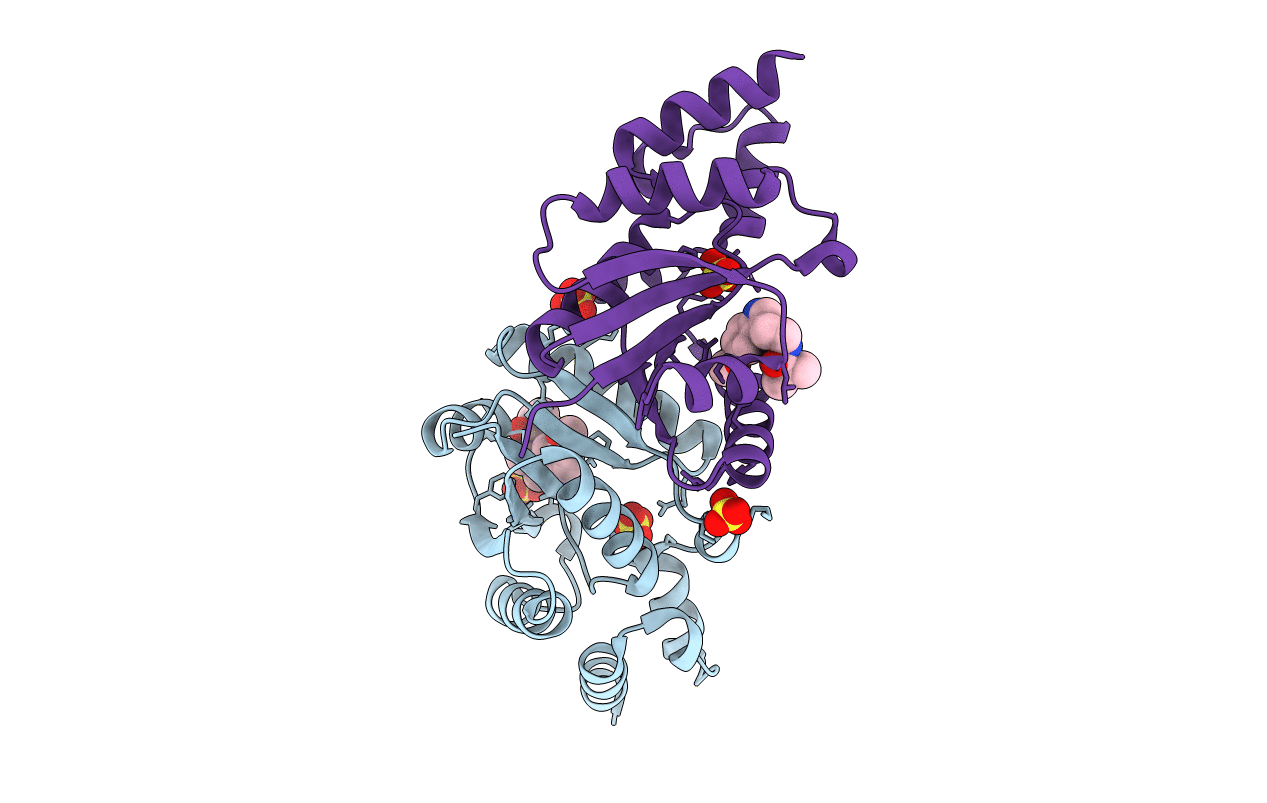
Deposition Date
2018-02-22
Release Date
2018-04-04
Last Version Date
2024-03-13
Entry Detail
PDB ID:
6CHM
Keywords:
Title:
Phosphopantetheine adenylyltransferase (CoaD) in complex with N-(2-(5-methoxy-1H-indol-3-yl)ethyl)pivalamide
Biological Source:
Source Organism:
Escherichia coli (strain K12) (Taxon ID: 83333)
Host Organism:
Method Details:
Experimental Method:
Resolution:
2.28 Å
R-Value Free:
0.22
R-Value Work:
0.19
R-Value Observed:
0.19
Space Group:
I 2 3


